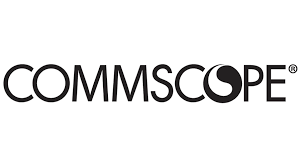CommScope Updates E6000 Converged Edge Router
Software release 13 for E6000 CER provides a path for expanding MSOs’ broadband service offerings

CLAREMONT, N.C.—CommScope has launched Software Release 13 for the E6000 Converged Edge Router (CER). Software Release 13 allows operators a flexible path forward with existing or new units as they move toward 10G with the power of the E6000 CER—the cable industry’s most widely-deployed CCAP—in rapidly-evolving cable networks.
This enhancement demonstrates the ability to build upon the E6000 CER’s set of features, field-hardened years of service, to provide support for today’s cutting-edge hybrid fiber-coax (HFC) cable access network technologies, the company reported.
“By providing operational support for these exciting, cutting-edge technologies, customers can extend the life of their current E6000 deployments for the foreseeable future,” stated Guy Sucharczuk, senior vice president and president of Access Network Solutions (ANS) for CommScope. “In today’s challenging business environment, with subdued subscriber growth and mounting competition, it’s essential for MSOs to monetize their current network assets while maintaining competitive value proposition for consumers and getting the best return on investment from any field upgrades they deploy. The upgrade to E6000 CER Software Release 13 can help MSOs accomplish that by enabling new services over their current E6000 CER assets and offering faster speeds to subscribers, helping to increase ARPU and fend off competition in a targeted, capital-efficient manner. Significantly, MSOs planning to make the leap to DAA and DOCSIS 4.0 now have options; many of the features in the E6000 CER coupled with the Software Release 13 upgrades will be available on CommScope’s Virtualized CCAP Core (vCore) solution. This means operators who are prepared to transition to virtualized CMTS (vCMTS) operation can realize the same benefits no matter which access architecture or platform they decide to deploy.”
With a deployment of Software Release 13 in their Gen 2 E6000 CERs, Multi-Service Operators (MSOs) can now support several enhanced network services for both Centralized (Integrated CCAP) and Distributed Access Architecture (DAA) networks, including:
- Support for next-generation cable modems, including DOCSIS® 4.0 devices running in DOCSIS 3.1 mode.
- Support for DAA Remote PHY deployments.
- D3.1Enhanced (D3.1E) channel bonding for increased downstream bandwidth.
- Expanded support for Low Latency DOCSIS, enabling new services for applications like gaming and virtual reality that require superb network responsiveness.
- Enhanced support for IPTV operation, allowing operators to transition from traditional SC-QAM video delivery and reclaim bandwidth for extended network capacities and speed tiers.
Operators are currently lab testing D3.1E with Software Release 13, and CommScope expects to have field trials later in 2024. D3.1E greatly expands downstream bandwidth to the subscriber by using next-generation DOCSIS 3.1 and 4.0 CPE devices, and bonding more OFDM channel blocks together than was possible with previous generation DOCSIS 3.1 CPE devices. Software Release 13 will bond together 768 to 834 MHz of downstream bandwidth (depending on baseline channel spacing of 6 MHz or 8 MHz) to provide support for 3 OFDM channel blocks and 32 SC-QAM channels. With future releases, this expanded capacity could eventually support service tiers of over 8 Gbps in the downstream.
CommScope plans to continue to enhance and expand E6000 CER features in future releases to keep pace with new network technologies and increase the return on investment from these upgrades.
More information is available at www.commscope.com.
Get the TV Tech Newsletter
The professional video industry's #1 source for news, trends and product and tech information. Sign up below.
George Winslow is the senior content producer for TV Tech. He has written about the television, media and technology industries for nearly 30 years for such publications as Broadcasting & Cable, Multichannel News and TV Tech. Over the years, he has edited a number of magazines, including Multichannel News International and World Screen, and moderated panels at such major industry events as NAB and MIP TV. He has published two books and dozens of encyclopedia articles on such subjects as the media, New York City history and economics.

